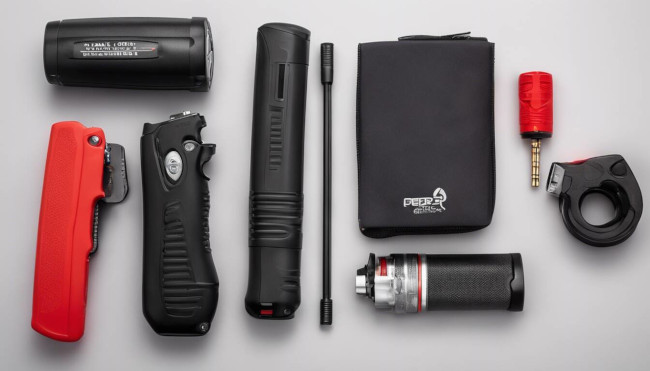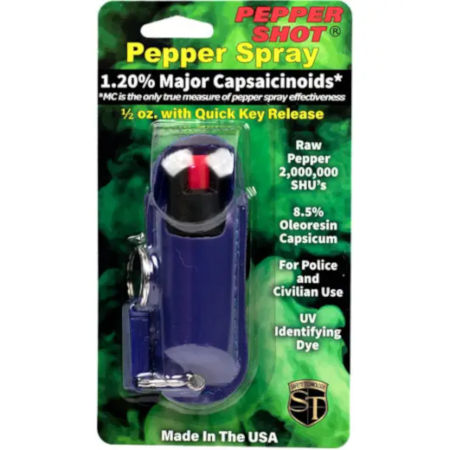Stun Gun or Pepper Spray?

Choosing the right self-defense tool is crucial for personal safety. Both stun guns and pepper spray offer effective protection, but they serve different purposes in different situations. Understanding their strengths will help you decide which one fits your needs best.
⚡ Stun Gun: Up-Close Protection
A stun gun is designed for close-contact defense, delivering a high-voltage shock to an attacker, causing pain, muscle disruption, and temporary incapacitation.
✔ Best for: Situations where you are in close range with an aggressor.
✔ Pros: Immediate effect, reusable, works through clothing.
✔ Cons: Requires direct contact to be effective.
✔ Legal Considerations: Some states have restrictions—always check your local laws.
Stun Master Hot Shot Stun Gun Flashlight 90 Million Volts
♦ TBOTECH Solution: Shop Stun Guns
Pepper Spray: Long-Range Deterrent
Pepper spray is a powerful long-range defense tool that temporarily blinds and disorients attackers by causing intense burning in the eyes and respiratory distress.
✔ Best for: Defending from a distance (5-12 feet away).
✔ Pros: Non-contact defense, multiple sprays per canister, easy to carry.
✔ Cons: Can be affected by wind direction, may take a few seconds to fully incapacitate.
✔ Legal Considerations: Some states have size and strength limitations—verify your local laws.
♦ TBOTECH Solution: Shop Pepper Spray
Which One Should You Choose?
Pick a Stun Gun If:
✔ You want a tool that stops an attacker instantly.
✔ You are comfortable with physical engagement if necessary.
✔ You want a reusable self-defense option.
Pick Pepper Spray If:
✔ You want to maintain distance from an attacker.
✔ You need a compact, easily deployable option.
✔ You want an effective tool that requires minimal strength to use.
Want the best of both? Many people carry both for maximum protection!
♦ TBOTECH Solution: Browse Self-Defense Products
Final Decision: Stay Protected, Stay Prepared
Both stun guns and pepper spray are excellent self-defense options, but choosing the right one depends on your lifestyle, comfort level, and potential threats. Whichever you choose, be prepared and practice using it so you can act quickly in an emergency.
Add your comment now!
Post CommentRecent posts
-
03/12/2025Best Stun Guns for Self-Defense in 2025
-
03/11/2025How to Prevent Kidnapping – Top Safety Tips
-
03/11/2025What Do Rapists Look For? 10 Red Flags to Avoid


